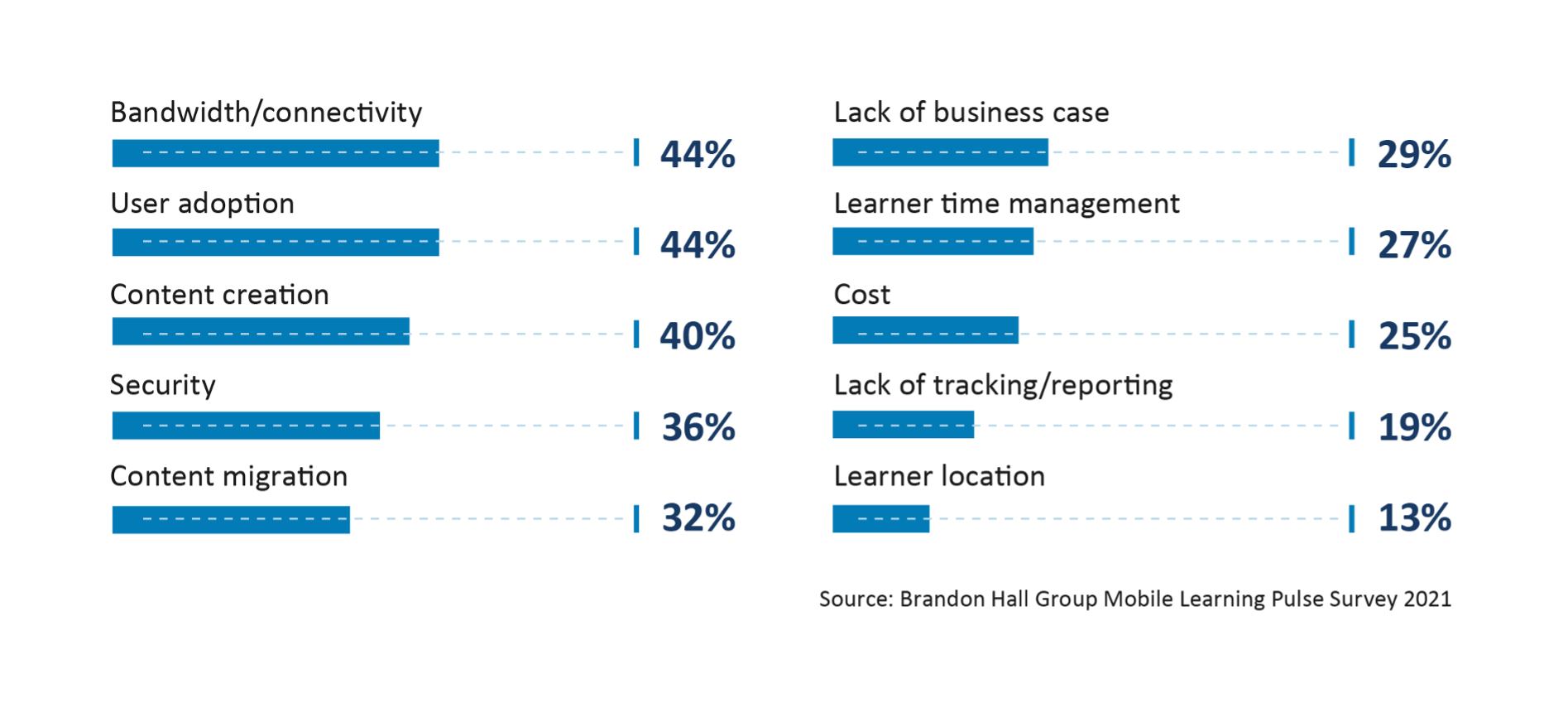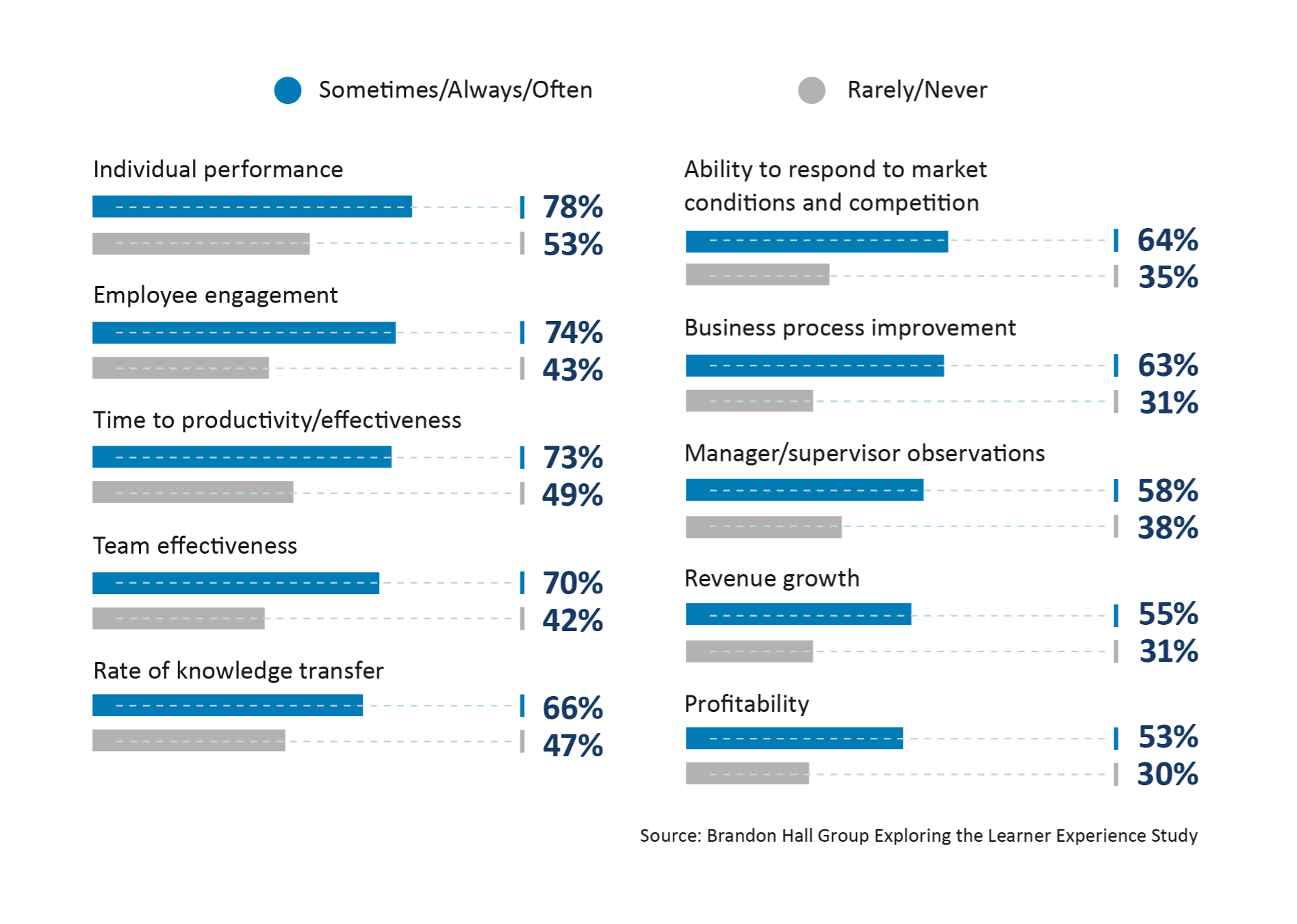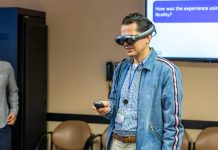
Despite their ubiquity in people’s everyday lives, mobile devices have yet to assume a major role in learning at work despite years of hype, trial and error, and advances in bandwidth and technology. For more than two-thirds of companies, less than 25 percent of learners access learning via mobile devices. Additionally, 19 percent of companies say their learners never use a tablet or smartphone for learning.
What percentage of your learners access learning via mobile devices?

Better Bandwidth
In the 15 years since smartphones debuted, we have finally reached a point where there is better bandwidth with 5G and readily available Wi-Fi just about everywhere. There is also less fragmentation around how smartphones operate. The HTML5 standard made most any kind of content easily accessible on mobile devices.
But challenges remain. Despite an ever-blurring line between work and life, many employees are hesitant to include a work-specific activity such as learning on their phones. And since most companies have accepted Bring Your Own Device as the standard, rather than providing devices, this creates a roadblock.
Even with all the advances, things such as security and bandwidth remain challenges for many companies, as well as creating the right mobile content and simply getting learners to adopt them.
Which of the following are the biggest challenges facing mobile learning delivery in your organization?

Pivotal Difference
An effective mobile learning strategy can be a pivotal difference in the overall success of the learning strategy. At a time when people are more mobile and dispersed than ever and many not returning to the physical workspace, the opportunities for mobile engagement have increased dramatically. Our research shows that the learning approach for organizations that do more mobile learning has a stronger impact on outcomes than those that don’t use it or only use it rarely.
How effectively does your current learning approach positively impact the following outcomes?

Good Questions
- What is the workforce’s appetite for mobile learning?
- Have we identified specific mobile learning needs?
- Do we have a defined mobile learning strategy?
- What are the IT/security concerns around mobile learning?
- Do we have mobile-optimized content?
- How do we drive adoption?
Brandon Hall Group POV
A critical element of mobile learning is that it must not be seen as merely a different screen for the same learning experience people have on their laptops and desktops. While mobile learning opportunities can be provided anytime and anywhere, it is often best used when targeted to the need at hand. People do not want to go through an entire eLearning module on their phone, even if it is mobile-friendly.
Though almost everyone has a mobile device, organizations must create and deliver learning that people want to experience on one. We can’t expect people to adopt mobile learning just because it exists. To get to a place where learners and the organization can come together to best leverage mobile learning, there are several key considerations.
Develop a mobile learning strategy. Don’t just assume mobile learning will simply occur. Make it part of the organization’s approach to learning. Define how it can be used as a tool to meet the needs of learners and the business.
Understand your audience. Run a survey or include a question as part of a larger employee survey to learn what kind of devices people use and whether they want to have access to mobile learning. You can gauge how much appetite there is and adjust your strategy accordingly. If possible, pull data from other systems such as HR (human resources) self-service to see how much mobile access is occurring.
Design content mobile-optimized. At the most basic level, the learning content your organization creates or acquires should be mobile-ready — responsive and adaptive to a mobile environment. People will not engage with material that keeps changing and has an interface that is difficult to interact with. The content needs to behave the same way any other mobile content would.
Consider mobile apps. Many learning technology providers have apps that create a native environment for mobile content. This alleviates various issues people may have viewing content through a mobile browser. In many cases, these apps can be white-labeled to look and feel similar to the organization’s other environments.
Determine offline needs. There may be times when learners must engage in learning when their device is offline. Ensure you have a plan for pushing content onto the mobile devices, removing it when necessary, and syncing offline activity once the learner is back online.
Understand security and technology constraints. IT departments get nervous about company activities occurring on mobile devices. Ensure you fully understand their concerns and try to alleviate them (when possible) with a detailed mobile-learning strategy. Internet security has improved dramatically since the first mobile devices and they can be remotely locked when lost or misplaced. Bandwidth capabilities are also an important consideration. While the office might have great connectivity, bandwidth varies out in the wild.
Work with HR to understand challenges with an hourly workforce. Just because learning can take place anywhere and anytime, doesn’t mean it should. Before rolling out a program that offers “downtime” learning opportunities, make sure your audience is not constrained by when they are on or off the clock.
Click here for information on Brandon Hall Group’s Professional Certification Program




